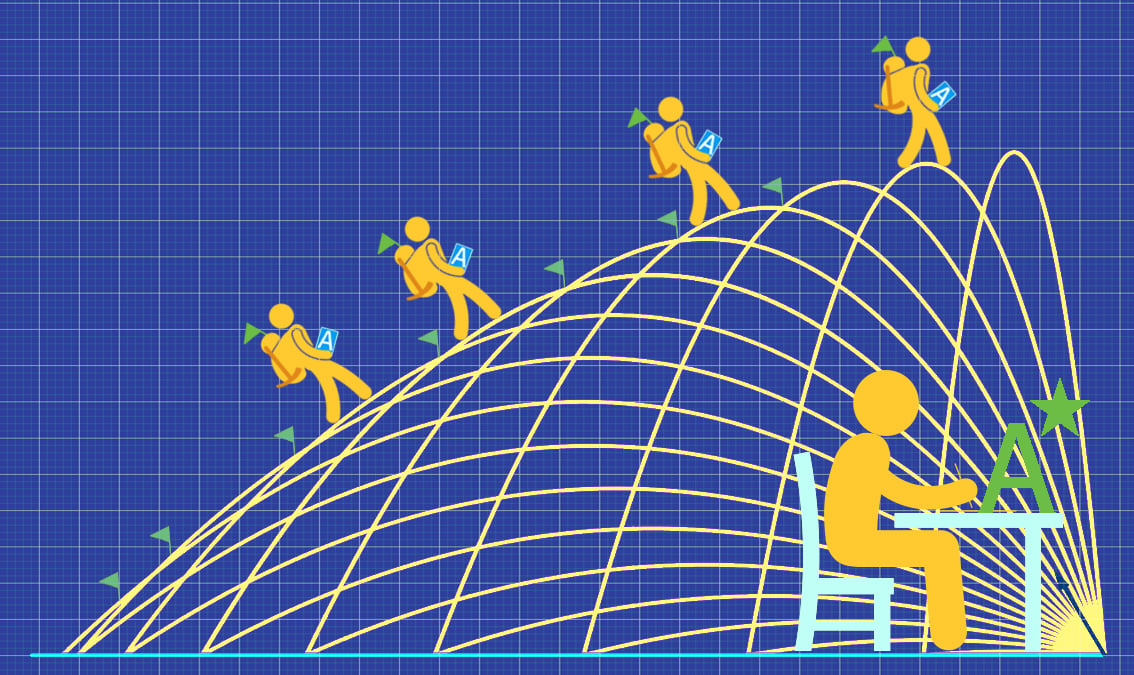- Level Awareness
- Duration 30 hours
- Course by Imperial College London
- Total students 7,688 enrolled
-
Offered by

What you will learn
By the end of this course, you'll be able to:
- Use calculus in kinematics for motion in a straight line
- Use differentiation and integration of a vector with respect to time for motion in two dimensions
- Solve projectile motion problems using both calculus/vector methods and constant acceleration formulae
- Use a standard model for friction
- Calculate moments understanding what they mean and how they might be used
- Solve problems involving parallel and nonparallel coplanar forces
- Apply an understanding of moments to statics problems involving rigid bodies
- Use the Normal distribution as a model for continuous data
- Conduct a hypothesis test of the mean using a Normal distribution
- Use a Normal distribution as an approximation of a Binomial distribution
- Add vectors diagrammatically
- Perform the algebraic operations of vector addition and multiplication by scalars
- Apply vector calculations to problems in pure mathematics
- Use methods for differentiating a function of a function, differentiating a product and differentiating a quotient
- Differentiate trigonometric and inverse trigonometric functions
- Use implicit and parametric differentiation
- Identify integrals that can be dealt with “by sight”
- Use a substitution method to integrate a function
- Use partial fractions to integrate rational functions
- Use the method of integration by parts
- Use the method of separating the variable to solve differential equations
- find the family of solutions for a differential equation
Skills you learn
Syllabus
Module 1: Calculus in Kinematics and Projectile Motion
- Using calculus for kinematics for motion in a straight line:
- Using calculus in kinematics for motion extended to 2 dimensions using vectors.
- Modelling motion under gravity in a vertical plane using vectors; projectiles.
- Composition of functionsInverse functions
Module 2: Friction, Moments and Equilibrium of rigid bodies
- Understanding and using the F≤μR model for friction
- The coefficient of friction motion of a body on a rough surface limiting friction
- Understanding and using moments in simple static contexts.
- The equilibrium of rigid bodies involving parallel and nonparallel coplanar forces
Module 3: The Normal Distribution
- Understanding and using the Normal distribution as a model
- Finding probabilities using the Normal distribution
- Conducting statistical hypothesis tests for the mean of a Normal distribution with known, given or assumed variance
- Interpreting the results of hypothesis tests in context
Module 4: Vectors
- Using vectors in two dimensions and in three dimensions
- Adding vectors diagrammatically
- Performing the algebraic operations of vector addition and multiplication by scalars
- Understanding the geometrical interpretations of vector calculations
- Understanding and using position vectors
- Calculating the distance between two points represented by position vectors.
- Using vectors to solve problems in pure mathematics
Module 5: Differentiation Methods
- Differentiation using the product rule, the quotient rule and the chain rule
- Differentiation to solve problems involving connected rates of change and inverse functions.
- Differentiating simple functions and relations defined implicitly or parametrically
Module 6: Integration Methods
- Integrating e^kx, 1/x, sinkx, coskx and related sums, differences and constant multiples
- Integration by substitution
- Integration using partial fractions that are linear in the denominator
- Integration by parts
Module 7: Differential Equations
- The analytical solution of simple first order differential equations with separable variables
- Finding particular solutions
- Sketching members of a family of solution curves
- Interpreting the solution of a differential equation in the context of solving a problem
- Identifying limitations of the solution to a differential equation
Auto Summary
Unlock the secrets of advanced mathematics with this comprehensive A-level Mathematics course designed for Year 13 students. Offered by edX, this course delves into essential topics such as general motion, moments and equilibrium, the normal distribution, vectors, sophisticated differentiation methods, integration techniques, and differential equations. Spanning 30 hours of engaging content, this course is ideal for learners seeking to deepen their understanding of complex mathematical concepts. With a professional subscription, you gain access to top-tier educational resources that enhance your learning journey. Perfect for those at the awareness level, this course aims to build a solid foundation in maths and statistics, making it an excellent choice for aspiring mathematicians and statisticians.

Philip Ramsden

Phil Chaffe


